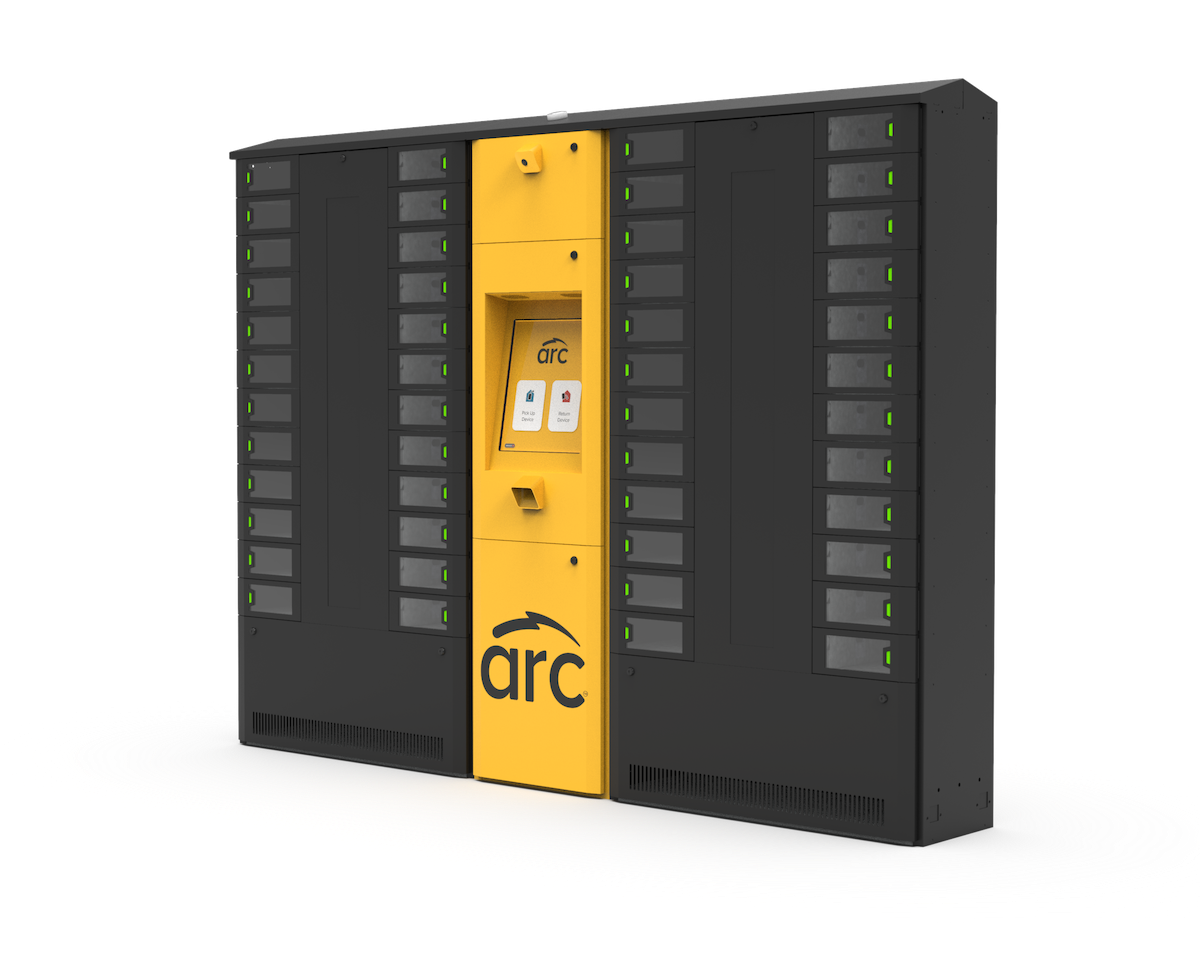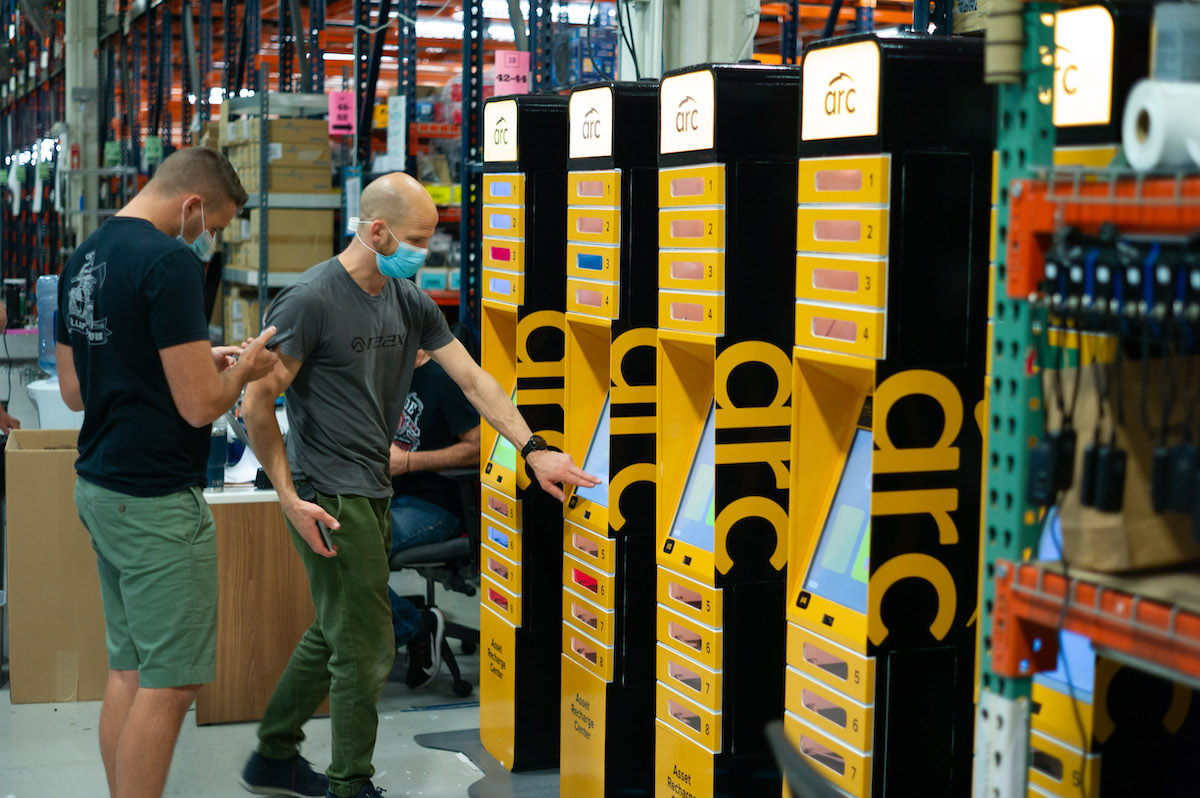Decade-old ChargeItSpot, the maker of retailed-placed charging stations, got a lesson on rethinking its business value amid the height of the COVID-19 pandemic.
The Bourse-based, venture-backed company was previously only known for its phone-charging towers placed in retail stores around the country. A shopper could lock their phone up to gain some battery life while they browsed retailers like Bloomingdale’s, North Face, Target and Marshall’s. But when the pandemic shut down nonessential stores for a good chunk of 2020, ChargeItSpot had to reevaluate.
“When it started and all of our client stores were closing, we were wondering like everyone else, well — for how long? We didn’t know,” CEO Douglas Baldasare told Technical.ly recently. “Our aim is to solve the consumer problem but also, we create value by giving them a reason to linger longer and shop more.”
So the company made a change that would add value in a world with a contagious virus: It outfitted its lockers with ultraviolet lights that can kill bacteria and virus particles in about 15 minutes. It was a bit of an engineering challenge to ensure all six sides of a phone were exposed to enough light to sanitize it without the light leaking out, Baldasare said. But the move made ChargeItSpot part of a protected class of health and safety vendors, and it kept about 98% of the company’s existing customers signed on when in-store retail spending had dropped dramatically.
Shortly after, ChargeItSpot provided the newly outfitted lockers to hospital systems in the area so its medical professionals could also charge and sanitize their devices while working. The pilot worked so well the hospital systems turned into paying customers, Baldasare said.
But on top of the sanitization feature and expansion to serving the healthcare field, ChargeItSpot had begun working on a retail-focused solution for an existing client that would solve another focused problem. The retailer reported that its store associates and managers were spending a lot of time docking, charging and fixing the devices used on the floor or for checkout. Its backroom often wasn’t staying organized; broken or uncharged devices would go back on the shelves for others to unknowingly try to use, and there was some device theft.
How could ChargeItSpot lockers assist with this problem? About a year ago, the company began work on ARC — Asset Recharge Center. The mobile device management kiosk would allow store associates to sign out devices, report problems, keep them charged and organized, and save time for managers who used to oversee the process.
It works similarly to an Amazon locker, where an employee badge opens a locker and allows an associate to report any issues with a device when they turn it in. Problem devices will stay locked, and ARC will ensure they’re shipped off to be fixed. The company’s signature towers can hold eight devices at a time, but soon will be rolling out a more modular kiosk that can control about 50 lockers with one self-service checkout.

The newer modular design of ARC coming in 2022. (Courtesy image)
ChargeItSpot completed a case study with Navy Yard’s Comoto Holdings, owner of RevZilla, and found that manager time spent on routine device oversight dropped by 97%, employee time spent checking devices in and out was reduced by 82%, time spent swapping out faulty or dying devices fell by 67%, and device shrink was “eliminated.”
The ARC kiosks are device agnostic and was initially focused on retail solutions, but one of ChargeItSpot’s first customers was a large ecommerce distribution center. Like the ChargeItSpot lockers, ARC’s application can be used in healthcare, food service or any industry where handheld tech devices are integral for operation.
“We’re in a tight labor market, and we don’t need to be spending time or money on devices that don’t work seamlessly,” Baldasare said.
ChargeItSpot recently raised additional venture capital, bringing its total raised to date to $25 million (though he declined to share specific figures). In 2020, it was operating with an about 130-person part and full-time team, and the company is still about the same size two years later, per the CEO.
“It’s incredible to see the impact that ARC is already having,” Baldasare said. “We’re helping solve a painful, long-standing problem for our partners at a time when minimizing friction in retail and warehouse environments is of the utmost importance.”
Before you go...
Please consider supporting Technical.ly to keep our independent journalism strong. Unlike most business-focused media outlets, we don’t have a paywall. Instead, we count on your personal and organizational support.
Join our growing Slack community
Join 5,000 tech professionals and entrepreneurs in our community Slack today!

Look inside: Franklin Institute’s Giant Heart reopens with new immersive exhibits
How Berkadia's innovation conference demonstrates its commitment to people and technology

Robot dogs, startup lawsuits and bouncing back from snubs: Philly tech’s biggest stories of the year


